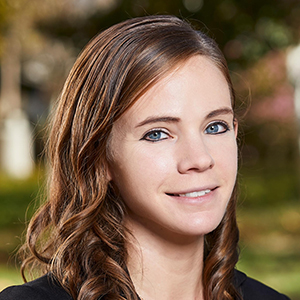On December 5, 2022, 192 laser beams at the National Ignition Facility (NIF) delivered 2.05 megajoules of energy onto a capsule of frozen hydrogen fuel. In less time than it takes light to travel 10 feet, the capsule was compressed to smaller than the width of a human hair, driving the fuel to extreme temperatures and densities that exceeded those found in the sun. Under these conditions, the fuel ignited and produced 3.15 megajoules of energy—making history as the first experiment to achieve net energy gain from nuclear fusion.
This achievement marked a pivotal step toward the vision of safe, carbon-free, and virtually limitless energy. Remarkably, the outcome was not entirely unexpected: a machine learning model that blended supercomputer simulations with experimental data predicted that ignition was the most likely result for this shot.

Kelli Humbird,
Lawrence Livermore National Laboratory
Building on this foundation, Project IceCap is advancing the design of robust, high-yield, and repeatable NIF implosions by combining exascale computing, machine learning, and state-of-the-art fusion simulations. IceCap’s end-to-end workflow employs multi-fidelity Bayesian optimization, incorporating capsule and hohlraum simulations alongside variability models based on past experiments. This approach ensures that designs are optimized not only for peak yield but also for robustness under realistic uncertainties in laser delivery and capsule performance. The workflow integrates innovations such as AI-accelerated physics packages for atomic calculations, advanced optimization methods, and HPC infrastructure like the El Capitan supercomputer, the Merlin workflow manager, DeepOpt Bayesian optimizer, Hermit atomic physics neural network, and CogSim variability models.
In this talk, we present both the groundbreaking ignition result at NIF and the IceCap project’s efforts to extend this success into the future. Together, they illustrate how fusion science, high-performance computing, and machine learning are converging to transform the design of ignition campaigns and advance scientific discovery.
Kelli Humbird is a design physicist at Lawrence Livermore National Laboratory. She completed her doctoral research while stationed at LLNL as a Livermore Graduate Scholar, earning her Ph.D. in nuclear engineering from Texas A&M University in 2019.
Kelli currently serves as a member of the Inertial Confinement Fusion management team as the lead for Cognitive Simulation. In addition to this role, she is part of a new project to leverage machine learning methods to optimize pulse shaping for the new Scorpius accelerator, and has served as the hohlraum designer for the Shock Merge ICF campaign. Her research has focused on machine learning for applications spanning ICF, primary physics, and nuclear forensics.
Additionally, she has served as a PI on an ACT-UP project for accelerating NLTE opacity calculations with neural networks, worked in collaboration with US Army leadership on modeling the spread of COVID-19, serves as a group leader in Computational Physics, and is an executive committee member for the American Nuclear Society Mathematics and Computational Division.